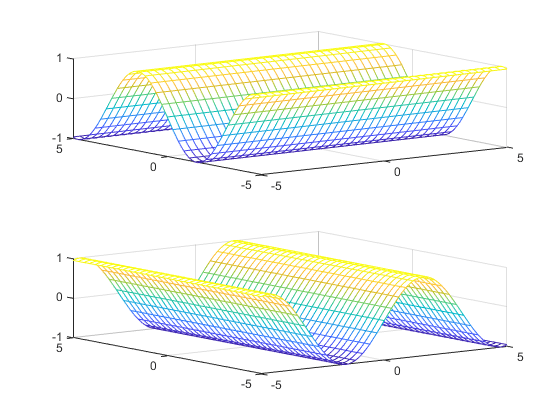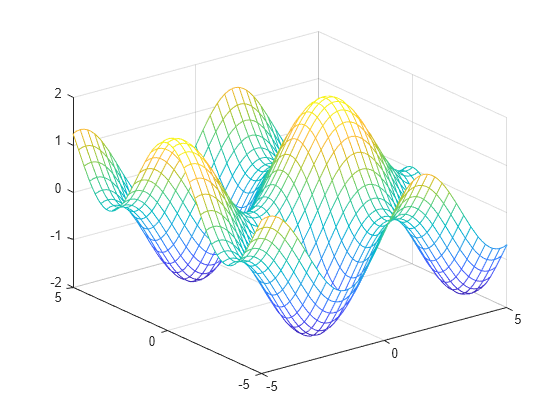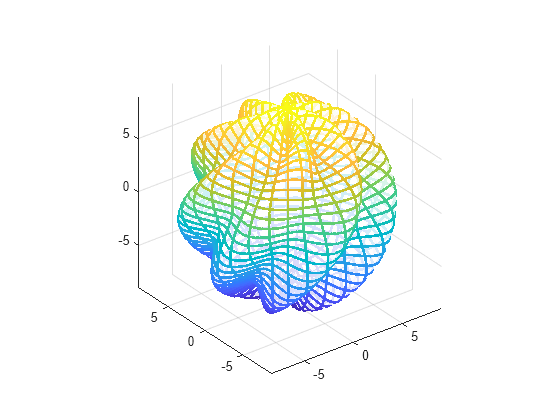fmesh
3 次元メッシュをプロット
構文
説明
fmesh( は、f,[xmin xmax ymin ymax])f(x,y) を x の区間 [xmin xmax] と y の区間 [ymin ymax] でプロットします。関数 fmesh は symvar を使用して、変数を並べ替え、区間を割り当てます。
fmesh( は、パラメトリック メッシュ funx,funy,funz)x = x(u,v)、y = y(u,v)、z = z(u,v) を u と v の区間 [-5 5] でプロットします。
fmesh( は、パラメトリック メッシュ funx,funy,funz,[uvmin uvmax])x = x(u,v)、y = y(u,v)、z = z(u,v) を u と v の区間 [uvmin uvmax] でプロットします。
fmesh( は、パラメトリック メッシュ funx,funy,funz,[umin umax vmin vmax])x = x(u,v)、y = y(u,v)、z = z(u,v) を u の区間 [umin umax] と v の区間 [vmin vmax] でプロットします。関数 fmesh は symvar を使用して、パラメトリック変数を並べ替え、区間を割り当てます。
fmesh(___, は、LineSpec)LineSpec を使用してライン スタイル、マーカー記号、プロットの色を設定します。
fmesh(___, は、1 つ以上の Name,Value)Name,Value 引数ペアを使用して、表面プロパティを指定します。このオプションは、前述の構文のすべての入力引数の組み合わせで使用できます。
fmesh( は、現在の axes オブジェクト ax,___)gca ではなくオブジェクト ax をもつ座標軸にプロットします。
obj = fmesh(___)
例
入力引数
名前と値の引数
出力引数
ヒント
fmeshとfsurfは同じ構文を使用するため、その他の例についてはfsurfのページに従ってください。fsurfのページのすべての例はfmeshにあてはまります。
アルゴリズム
fmesh は f のシンボリック変数を x 軸に、次に y 軸に割り当て、symvar は割り当てられる変数の順番を決定します。そのため、変数名と軸名が対応しない場合があります。fmesh が x または y を対応する軸に割り当てるように強制するには、プロットするシンボリック関数を作成し、そのシンボリック関数を fmesh に渡します。
たとえば、次のコードは f(x,y) = sin(y) のメッシュを 2 つの方法でプロットします。1 つ目の方法では、y 軸に対して波形を振動させます。つまり、1 つ目のプロットでは変数 y を対応する y 軸に割り当てます。2 つ目のプロットでは、y を x 軸に割り当てます。これがシンボリック関数内で最初の (および唯一の) 変数であるためです。
syms x y; f(x,y) = sin(y); figure; subplot(2,1,1) fmesh(f); subplot(2,1,2) fmesh(f(x,y)); % Or fmesh(sin(y));

バージョン履歴
R2016a で導入
































